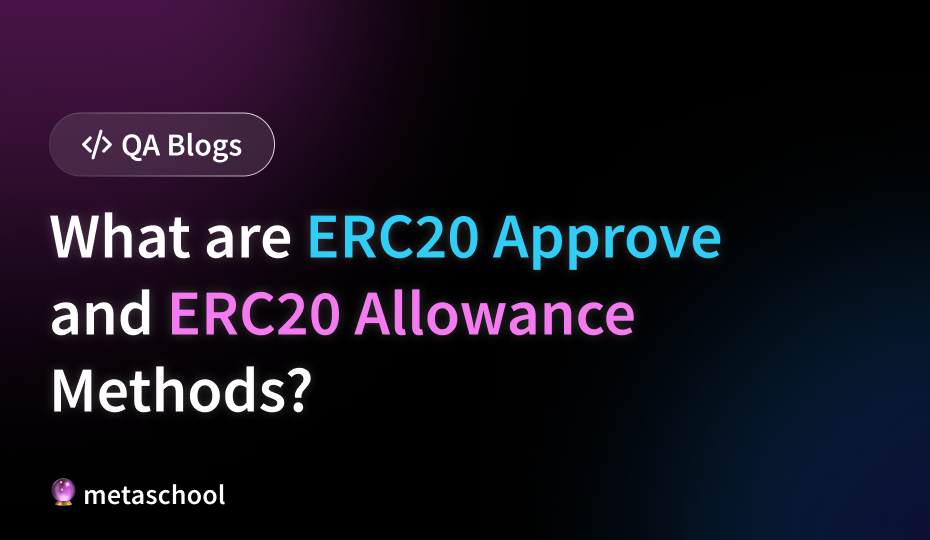Table of Contents
Overview
The ERC20 approve and ERC20 allowance methods allow you to give a specific smart contract permission to use a certain amount of their tokens, without giving control of the entire token balance. It’s like giving a friend permission to withdraw money from your account up to a certain limit without giving them total control of your funds.
Let’s look at each method with coding examples for better understanding.
🔥 Check this out: Build in Public
ERC20 approve method
- This method empowers a token holder to authorize a designated smart contract to spend a predefined quantity of tokens from their balance.
- The ERC20 approve method enables token holders to selectively allow spending for specific purposes or transactions, enhancing the flexibility of token usage.
- Token holders retain the ability to revoke or modify approvals granted through the approve method, providing dynamic control over the smart contracts they authorize.
- Function Signature:
function approve(address spender, uint256 amount) external returns (bool); - Parameters: There are two parameters in ERC20 approve method
spender: The address of the permitted smart contract or any Ethereum address.amount: The maximum token amount the spender is permitted to use on behalf of the token holder.
- Return Value: A boolean signaling the success of the approval.
function grantPermission(address spender, uint256 amount) external {
// Grant approval for the spender to utilize 'amount' tokens on behalf of the message sender
require(token.approve(spender, amount), "Approval failed");
}ERC20 allowance method
- This method provides the remaining token count that the spender can expend on behalf of the token holder.
- The ERC20 allowance method facilitates real-time monitoring of the remaining spending capacity, allowing both token holders and smart contracts to stay informed about the available allowance.
- Token holders can strategically allocate allowances to different smart contracts based on their purposes, optimizing resource distribution within the ERC20 ecosystem.
- Function Signature:
function allowance(address owner, address spender) external view returns (uint256); - Parameters: There are two parameters in ERC20 allowance method
owner: The token holder’s address.spender: The address of the authorized smart contract or any Ethereum address.
- Return Value: The remaining allowance (token count) available for the spender.
function checkAllowance(address owner, address spender) external view returns (uint256) {
// Retrieve the remaining allowance for 'spender' on behalf of 'owner'
return token.allowance(owner, spender);
}Conclusion
- ERC20 allowance and approve methods allow users to set detailed permissions and ensure safe transactions in the ERC20 system.
- Token holders can control how much smart contracts affect their tokens, providing a nuanced layer of control to decentralized applications. Knowing and using these methods is essential for effectively using ERC20.
Tried this out? Let us know how it went by tagging Metaschool on your Social Media!
Follow us on –
🔮 Twitter – https://twitter.com/0xmetaschool
🔗 LinkedIn – https://www.linkedin.com/company/0xmetaschool/
